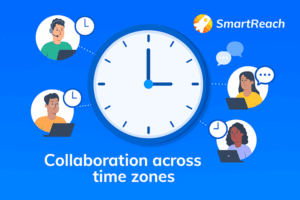5 Factors That Affect Employee Experience and Performance
Businesses these days are realizing that happy, engaged employees are really important for success. A company’s plans, how well they execute them, and their profits are all tied to how good of an experience their employees have.
An employee’s experience is basically their overall journey with the company – everything from getting hired and trained to their day-to-day work, opportunities for growth, and even how they’re treated when they leave. All those interactions and feelings shape how motivated and productive that employee is.
When employees have a positive experience, they’re more engaged, perform better, and are less likely to quit. But a negative, unsatisfying experience is seriously costly – it accounts for $8.8 trillion in losses globally each year, which is 9% of the entire global economy!
That’s why more companies are making employee experience a top priority these days. They know cultivating a great experience helps attract and keep talented people who will drive the business forward.
In this post, we’re breaking down the 5 factors that shape how employees feel and perform on the job.
5 Factors That Affect Employee Experience and Performance
1. Organizational Culture
Employees who feel belonged are 21% less likely to leave an organization.
The culture of a workplace is very important for how employees feel and how well they do their jobs.
An organization’s culture is like its personality. It includes the values, beliefs, behaviors, and unspoken rules that guide how work gets done and how people treat each other. A positive, inclusive culture that aligns with the company’s values is the foundation for a great employee experience.
A strong, supportive culture makes employees feel valued, motivated, and part of a community. This leads to better performance because they feel invested in their work and the company’s success.
On the other hand, a negative or toxic culture can make employees feel disengaged, stressed, and like they don’t belong. This hurts their productivity and job satisfaction.
To build a great culture, HR and company leaders should work together to define core values and make sure they’re put into practice at every stage of an employee’s journey – from hiring to training, performance reviews, and career growth opportunities. Corporate training solutions can play a key role in fostering this culture by equipping employees with the skills and knowledge to thrive within a values-driven organization.
Checking in with employees through surveys and focus groups helps companies understand the current culture and what areas need improvement. Encouraging cross-team collaboration, diversity and inclusion efforts, and employee resource groups are also effective ways to promote a sense of community and belonging.
2. Strong leadership and management
The quality of leadership and management is a make-or-break factor for the employee experience. The famous saying rings true: “People leave managers, not companies.” Great leaders inspire, engage, and empower employees to do their best work.
That’s why leadership development, including employee engagement training, must be a top priority. Programs should focus on building crucial skills like emotional intelligence, coaching abilities, inclusive leadership, and change management competencies. Getting 360-degree feedback provides valuable insights to guide this development.
Regular, constructive feedback itself is vital – 64% more employees stay when they receive it in a timely manner. Beyond just development, managers need proper training to become strong people leaders. Topics like delivering feedback, conducting reviews, and handling difficult conversations equip them with essential skills. Topics like delivering anonymous employee feedback, conducting reviews, and handling difficult conversations equip them with essential skills.
Giving managers the right tools and templates also enables consistency when guiding employees through key processes. But perhaps most importantly, organizations must create a culture where open, two-way feedback flows freely. Regular informal check-ins between managers, employees, and peers foster continuous growth and psychological safety. To support this consistency, organizations can use an HR portal that centralizes all necessary tools and templates for leadership training and performance management. This portal provides managers with easy access to resources needed for conducting effective reviews and handling difficult conversations, ensuring that all leaders are equipped to foster a supportive and empowering environment
Comprehensive leadership training equips managers with capabilities like emotional intelligence and coaching that directly elevate the employee experience on their teams. With the skills for clear communication, guidance and the right supporting resources, managers can effectively develop and motivate their people.
On the flip side, poor leadership creates a negative experience. Lack of training leaves managers ill-equipped to provide helpful feedback and support, stunting employee growth. Micromanagement and low emotional intelligence also severely impact morale and engagement.
3. Career development opportunities
Beyond just a paycheck, employees today need opportunities to continually learn, grow, and develop their careers. Businesses that strategically invest in employee development reap significant rewards. In fact, retention is 34% higher among employees who have access to career growth opportunities.
To support this growth, companies should work closely with managers to ensure each employee has an individualized development plan that aligns their personal goals with the organization’s priorities. A comprehensive approach incorporating formal training, mentoring programs, stretch assignments, and job rotation experiences can provide employees with varied and holistic learning opportunities. Implementing online training software can also facilitate this process by providing accessible and diverse learning materials.
Additionally, companies can create interactive learning modules by converting PDF to SCORM, making existing resources more engaging and trackable.
Additionally, providing targeted resources such as IT certification study materials can be highly beneficial. For example, offering access to IT Certification Dumps and study guides can significantly enhance employees’ technical skills. This can prepare them for industry-recognized certifications, further supporting their professional growth.
A strong internal mobility program is also crucial. By prioritizing internal candidates for new roles and providing transparency into career progression paths, businesses demonstrate their commitment to investing in employees’ long-term development. This sends a powerful message that growth is valued, fostering increased loyalty and retention.
Matching employees to projects and opportunities based on their skills, interests and aspirations – rather than solely seniority – helps ensure all individuals have equitable access to enriching experiences that allow them to shine.
Additionally, tools like digital signage software for employee communication can also support better development. According to G2, adopting the right employee communication software plays a key role in creating a connected and consistent experience for employees across hybrid workplaces.
Personalized development plans give employees a sense of purpose and provide daily motivation while training, mentoring, and stretch assignments allow them to expand capabilities and make more valuable contributions, improving performance. A focus on internal mobility shows the company’s commitment to growth, increasing loyalty and retention for a superior overall employee experience.
On the other hand, neglecting career development leaves employees feeling stagnant and undervalued. Without growth opportunities, they become disengaged from their work and unmotivated to go above and beyond. This lack of investment in employee growth leads to high turnover as talented people seek development elsewhere, severely diminishing the workforce’s potential.
To further support the career development process and ensure seamless time management, especially for field-based employees, integrating an employee clock-in and out app can be highly beneficial. By accurately tracking hours and providing real-time data, such tools help businesses monitor performance, reduce payroll errors, and allow managers to make more informed decisions on employee development, making it easier to support employees’ growth while also ensuring productivity.
4. Recognition and rewards
The impact of feeling appreciated at work cannot be overstated – 66% of employees are likely to leave their job if they don’t feel their contributions are valued. As humans, we all have an innate need for appreciation and recognition of our efforts.
When employees believe their hard work is acknowledged and celebrated, they are far more motivated to consistently go above and beyond in their performance. A strategic recognition and rewards program is important to cultivating an exceptional employee experience.
While formal initiatives like years of service awards and annual bonuses are important for recognizing tenure and major accomplishments, it’s the informal, day-to-day moments of appreciation that resonate most deeply. Peer-to-peer recognition platforms and spot bonuses to commend extraordinary efforts can be highly impactful motivators.
For rewards to truly inspire employees, they should be personalized to align with individual needs and preferences, extending beyond just monetary compensation. Options like flexible working arrangements, wellness benefits, or professional development funds can be more meaningful.
Recognition and rewards must be issued fairly and free of bias.
Frequent, informal appreciation from peers and managers boosts morale and engagement. But if employees feel their work continuously goes unnoticed and unappreciated, they feel undervalued and become demotivated to maintain high performance standards.
Using digital signage software can further elevate recognition efforts by showcasing employee achievements in real time across the workplace. Whether it’s displaying “Employee of the Month” highlights, performance milestones, or peer-to-peer kudos, digital screens make recognition visible, timely, and consistent. This public acknowledgment fosters a culture of appreciation and reinforces positive behavior across teams.
5. Positive work environment
The physical workplace and digital tools employees use impact their daily experience in big ways. A well-designed office boosts collaboration, creativity, and overall well-being.
After COVID, hybrid work has become the new normal for many businesses. So HR leaders must ensure a seamless, equal experience whether employees work on-site or remotely. In fact, 67% of employees prefer a hybrid setup.
This means investing in the right collaboration technology, ensuring secure remote access with a top VPN service, and digital signage for corporate comms.
It also means setting clear guidelines and norms for hybrid meetings. Remote employees should have access to the same opportunities as in-office staff. Utilizing digital signage services can further enhance communication and engagement, ensuring that important updates and information are effectively disseminated to all employees regardless of their location.
For a smooth employee experience, it’s crucial to provide tools that make jobs easier and improve day-to-day work processes. By integrating digital employee experience tools, task management software or communication platforms designed to streamline tasks, automate repetitive processes, and foster seamless communication, organizations can make the work environment more efficient and engaging. These tools not only improve productivity but also ensure that employees feel supported and empowered in their roles, enhancing their overall experience and satisfaction.
The physical office layout matters too. It should fit the needs of the workforce. Having a mix of collaboration areas, private quiet zones, and social spaces accommodates different work styles. Design elements like natural light, plants, and outdoor views also improve well-being.
A consistent experience across virtual and in-person environments allows employees to thrive no matter where they work. The right employee feedback tools and inclusive policies make this possible. Amenities and varied workspaces promote focus, innovation, and overall wellness for top performance.
On the other hand, an outdated digital setup or poorly designed office leads to dissatisfaction and lower productivity. Employees struggle with old technology, uninviting spaces, and no accommodations for different workstyles. Lack of hybrid work support also contributes to a negative experience that hurts performance.
Wrap Up
Designing a best-in-class employee experience is both an art and a science. It takes empathy to understand what employees need to excel in their roles, a desire to improve, and the bravery to go against the norm.
The five key areas we’ve discussed in this post will help build an experience that engages employees, unleashes their potential, and powers performance for the business.
Employee experience is not defined by any one program or initiative. It’s about creating an environment where employees can bring their whole self to work, feel supported and valued, and do their best work. When organizations get this right, they can improve individual and collective performance along the way.
As the competition for talent continues to grow and the expectations of today’s employees increase, investing in employee experience is important for a company’s success.
Bottomline: Place employees at the center of your strategies to cultivate a healthy and high-performing workforce.




